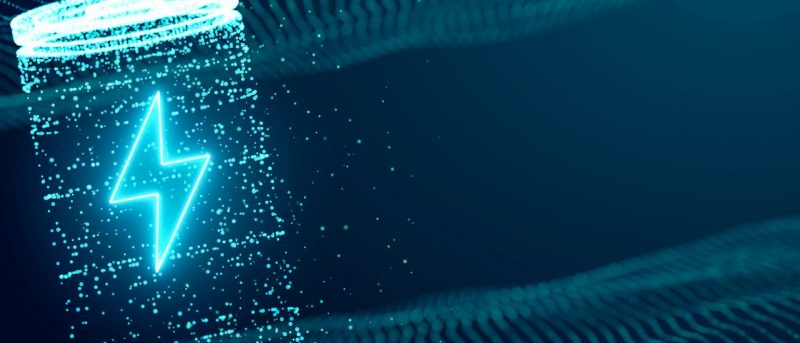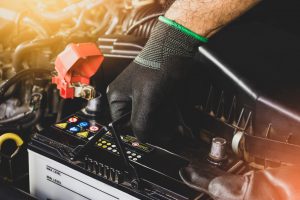Batteries have been a reliable source of cordless power for more than just small devices like smartphones and computers. They also help power large machinery and equipment in factories and other industrial facilities.
Meanwhile, there are numerous types of industrial batteries available. With numerous different battery types, designs and sizes, it can be challenging to identify the ones you need. Essentially, you can find the right batteries for your industrial equipment by understanding more about the most common industrial battery types available.
On the other hand, if you’re looking for a reliable provider of industrial batteries, you can visit this website to reach out to Industrial-Batt. They can provide expert recommendations on the proper industrial battery for your needs.
In this article, we’re sharing some of the most common types of industrial batteries, along with their various industrial applications.
Table of Contents
Lead-Acid Batteries
These are the oldest type of batteries used today. Lead-acid batteries are large, heavy batteries often used to power different industrial equipment such as forklifts, automotive, outdoor power equipment, uninterruptible power supply (UPS), and telecommunication systems.
Lead-acid was the only practical battery technology for storing solar energy until recently.
Lead-acid batteries are rechargeable and have good charge-discharge efficiency. However, they tend to take longer to charge than other battery options. Since this battery technology has been here for years, it’s been one of the most reliable options for energy projects.
In addition, they’re also cheaper compared to newer types of industrial batteries. Also, lead-acid batteries are the most successful type in recycling. On the other hand, lead-acid batteries tend to have shorter lifespans, lasting between two and eight years at most.
Furthermore, they’re also sensitive to surrounding temperature—if they work in areas above 20°C, their lifespan and performance will decrease. Lead-acid batteries are also not the most eco-friendly option out there. Plus, there’s also the fact that they take up too much space.
Lithium-Ion Batteries
Lithium-ion has become a very popular type of battery for various applications. It’s mostly used in everyday electronic devices and gadgets such as laptops and smartphones.
Moreover, this rechargeable battery has also become popular in the industrial sector. Lithium-ion is used to power electric cars, satellites, aircraft, and even industrial forklifts.
On the other hand, lithium-ion batteries are efficient, fast-charging, and lightweight, making them one of the most preferred battery types in numerous industries. It can be discharged deeper and tends to have a longer lifespan than lead-acid batteries, usually lasting 13 to 18 years.
While it’s a bit more expensive than other types, lithium-ion is expected to become more affordable in the next few years as production becomes more accessible. Lastly, it’s also eco-friendlier and causes little to no harm to humans and the environment when properly disposed of.
Meanwhile, the only drawback of lithium-ion batteries is that they’re fragile and have a significant risk of causing fire if misused.
Nickel-Cadmium Batteries
Like lead-acid batteries, nickel-cadmium batteries are one of the oldest types of batteries available. It’s most commonly used in aircraft, exercise equipment, emergency power, telephone systems, marine applications, railroad switching gear, and even solar panels and arrays.
Nickel-cadmium batteries are known to deliver a high current output and are relatively tolerant of overcharging. Significantly, nickel-cadmium batteries can withstand up to 500 charging cycles.
Hence, this industrial battery is popular due to its reliability and heavy-duty performance. In addition, this makes them suitable for applications in harsh environmental conditions.
However, it’s also more challenging to maintain than other battery types and much more expensive than lead-acid batteries. Furthermore, it’s not the most eco-friendly option out there.
Lithium Iron Batteries
This is one of the newbies in the world of battery technology. In particular, energy companies are excited about its numerous potential applications in weather monitoring devices, oil and gas pipeline machinery, ocean buoys, and so much more.
As a phosphate-based technology, lithium iron batteries have better chemical and thermal stability, making them much safer than lithium-ion. The lithium phosphate cells are incombustible in case of mishandling when discharging or charging.
Additionally, it’s also more stable even when overcharged or in short-circuit conditions. It’s known to withstand high temperatures and harsh environments without decomposing. Lithium iron also offers a longer cycle life and is relatively eco-friendly, making it suitable for various industrial applications.
Take Away
And there you have it! While the average consumers may never run into these types of batteries, they do exist to power the heavy-duty application in the commercial and industrial sectors, from industrial machinery to backup powers for data centers.







